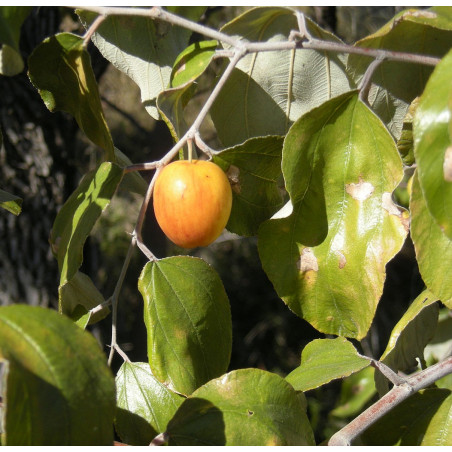





Ziziphus mauritiana is a small, robust tree that produces fruits ranging from 1.5 to 6 centimeters in diameter, with an oval or round shape. The fruit has a thin skin and can vary in color from green to red as it ripens. Its white flesh is very juicy, aromatic, and sweet in flavor, similar to a plum, making it a delight both fresh and in preserves. This plant is resistant to arid conditions, making it ideal for cultivation in hot and dry climates.
Ziziphus mauritiana, also known as Indian jujube or the Indian plum, is a small and resilient tree native to the tropical and subtropical regions of Asia, although it is also cultivated in other parts of the world with warm climates. This plant belongs to the Rhamnaceae family and is valued both for its fruit and its agronomic benefits.
The Ziziphus mauritiana tree typically reaches heights between 3 and 6 meters and has a compact, dense canopy. Its leaves are evergreen, oval in shape, with serrated edges and a bright green color. The flowers, small and yellowish-green, are inconspicuous but play an important role in fruit production. The fruit is a drupe, round or oval in shape, ranging from 1.5 to 6 centimeters in diameter. Its skin is thin and can change color, from green to red or even brown as it ripens.
The flesh of the fruit is white, very juicy, with a sweet and slightly tart flavor, reminiscent of a plum. It has a delicate aroma and a soft texture, making it a delight both fresh and in preserves, jams, and other processed products. In addition to being a food source, the fruit of Ziziphus mauritiana also has applications in traditional medicine in various cultures, used to treat a range of ailments such as digestive issues, insomnia, and respiratory conditions.
This species is known for its resistance to arid conditions, making it ideal for cultivation in dry, hot climates. Its ability to tolerate dry soil and its low water requirements make it an excellent choice for agriculture in regions with limited irrigation. Ziziphus mauritiana also supports biodiversity by providing habitat and food for various wildlife species, especially in arid regions.
Additionally, its ability to adapt to different soil types, from sandy to clayey, makes it an extremely versatile plant. It is cultivated in both family gardens and large commercial plantations, particularly in countries like India, Pakistan, and other areas of Southeast Asia.
The seeds of Ziziphus mauritiana should be sown in well-drained soil, preferably sandy or clayey, with a slightly acidic to neutral pH. Before planting, it is recommended to scarify the seeds, that is, lightly scrape the surface with sandpaper or a knife to facilitate water absorption and improve germination rates. Once scarified, soak the seeds in water for 24 hours. Then, sow them at a depth of about 1 cm in pots or directly in the ground, keeping a distance of at least 30 cm between each seed. It is important to keep the soil slightly moist but not waterlogged, and place the seeds in a warm location with temperatures between 25 and 30 °C. Germination typically occurs between 2 and 4 weeks. Once the seedlings reach several centimeters in height, they can be transplanted to a permanent location.

| January | February | March | April | May | June | July | August | September | October | November | December |
Data sheet
No customer questions for the moment.